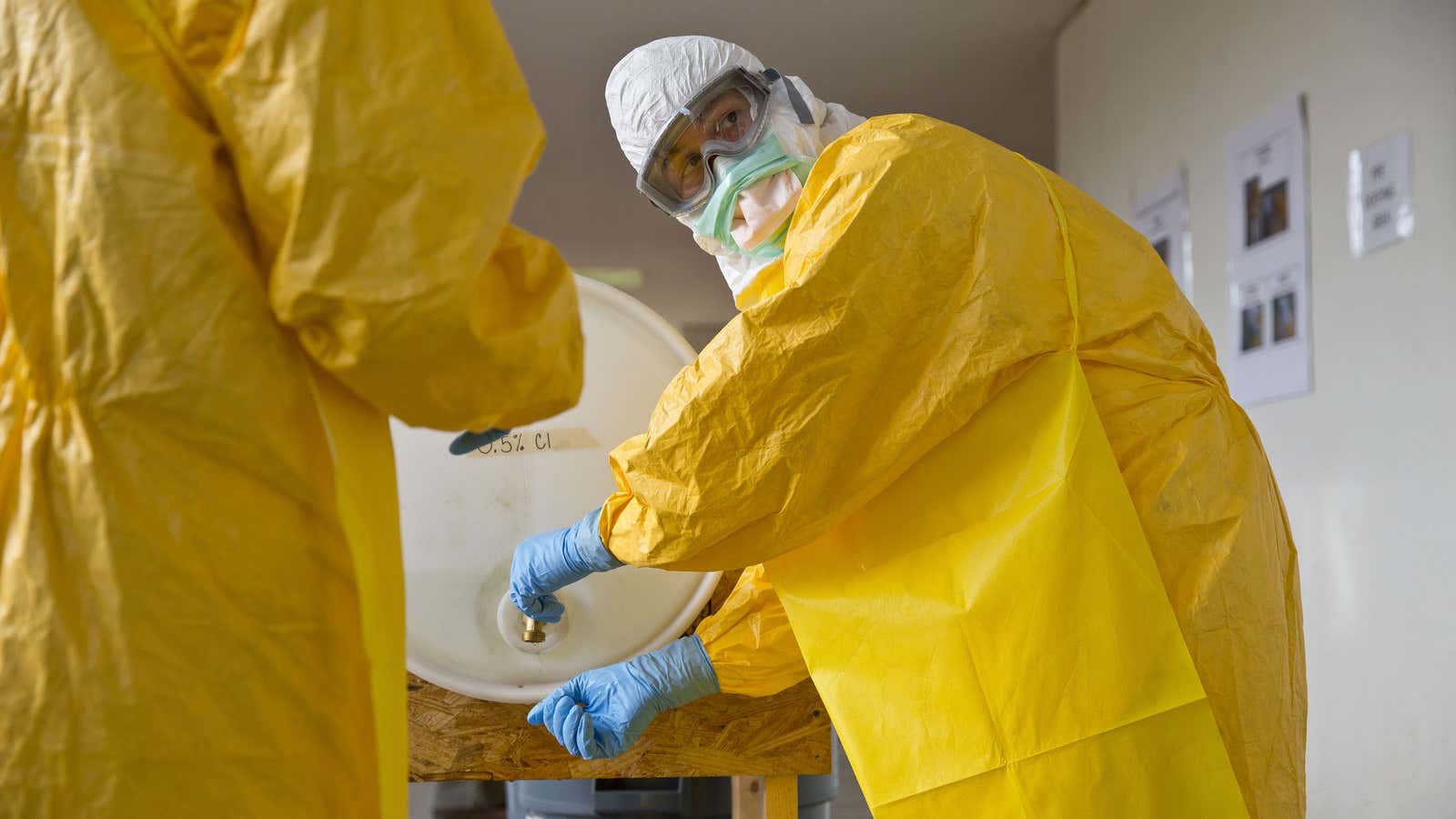Ebola is a particularly tough virus on health workers, who account for 8% of the victims in West Africa. In the US, and specifically in Texas, the ratio is technically lot worse: After the second nurse in Dallas has been diagnosed with Ebola, 66% of the cases there (two out of the three) have been health workers.
As people around the world try to assess the danger of Ebola, it’s particularly disconcerting to hear that health workers—who one might presume are knowledgeable enough to protect themselves from transmission—are failing to do so.
But in the US at least, it appears that even health workers don’t feel confident in their understanding of how to deal with Ebola. An online survey conducted over the last eight days by the nurse networking site allnurses.com drew responses from more than 3,000 nurses across the country—with higher percentages of respondents in Texas (9%) and California (8%). The responses paint a picture of a widespread systemic breakdown when it comes to training for dealing with a highly infectious disease such as Ebola. Three out of four nurses—73%—say that they had not been offered training on Ebola by the health facility they work at, and similar percentages admit to not feeling prepared to handle Ebola cases, and to feeling personally unsafe.
Brian Short, the founder of allnurses.com and a registered nurse himself, says nurses overwhelmingly lack “personal protective equipment” and adequate training to deal with the emergency. Adding to the unease, he said, is a lack of available information about the avenues by which the two nurses in Texas became infected: “We don’t know how that happened,” he said. “That is a little bit alarming.”
Nurses also seem to have opinions on how to address the gap in their training: A third of the respondents said they’d like to see “better communication about preparedness plans” at the facility where they work. But an even higher number, 41%, said they want hands-on, face-to-face training, rather than written instructions—in the form of “live (in-person) training sessions or practice drills.”
